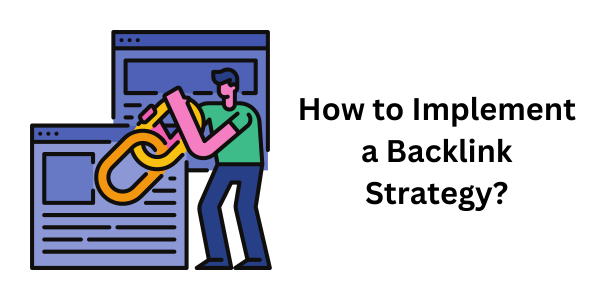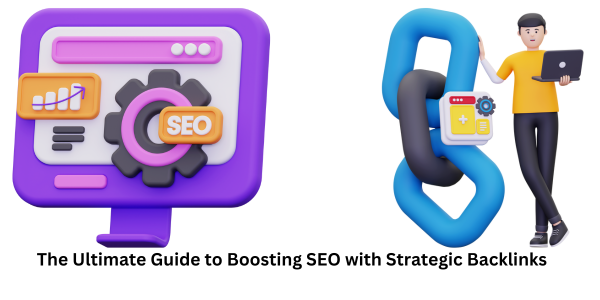Backlinks are the internet’s way of directing users to your website, essential for SEO as they enhance your site’s ranking and credibility on search engines like Google and Bing.
Securing backlinks is not a matter of luck or randomness but an art and strategic endeavor. It requires thoughtful planning and creativity to ensure these links are of high quality and relevant to your website’s mission, ultimately serving the interests of your target audience.
This guide aims to enlighten you on how to effectively accumulate more backlinks. We will navigate you through developing a comprehensive backlink strategy, which is crucial for elevating your website’s visibility on search engines and meeting your online objectives. To drive more traffic to your website, leveraging Impressive SEO services in Melbourne can significantly contribute to your site’s success, marking a starting point for enhanced online visibility and growth.
Table of contents
What is the Purpose of Backlink?
Backlinks can help your website in several ways, such as:
Increase Traffic
Backlinks are like boosts for your website’s visitors. They can make you show up higher and more often when people search for stuff that matches your site. This means that more people who are genuinely interested in what you offer can discover your spot on the web. And when they do, they’re more inclined to hang around and perhaps even become your customers.
Increase Authority
Backlinks are like stamps of approval for your website. They show that you’re sharing stuff that really helps people out. Being recognized as someone who’s knowledgeable and helpful builds trust and respect in your industry. The people are more likely to stick around and keep returning for more.
Increase Conversions
Backlinks can work like a charm in turning visitors into customers. When your website gives people exactly what they’re after, it’s like winning big. It puts smiles on their faces and boosts the chances they’ll do what you hope for, whether it’s joining up, getting in touch, or buying something.
How to Create a Backlink Strategy?
A backlink strategy is a plan and a process that outlines the goals, audience, content, and methods for earning backlinks, for your website and your niche.
A backlink strategy can help you in several ways, such as:
Define your Goals
Planning out a backlink strategy is like mapping your dreams and aspirations. It helps you figure out what you’re aiming for with those links—like more visitors, more street cred, or more sales. You might be after a boost in reputation, trust, or just getting your name out there.
Know your Audience
Crafting a backlink strategy is like getting to know your crowd better. It’s about understanding who you’re targeting with those links—whether it’s your ideal customers, your industry pals, or the influential players. You’ll want to delve into things like their characteristics, motivations, and desires.
Create your Content
Mapping out a backlink strategy is like plotting your content journey. It’s about figuring out what you want to say to your crowd through those links—whether it’s shouting about what sets you apart, your special selling points, or why you’re the top dog. You’ll need to decide on stuff like what kind of content you’ll sling their way—whether it’s informative, educational, fun, or all about getting them on board.
Choose your Methods
It’s all about figuring out how you’ll nab those valuable links—whether it’s making connections, spreading the word, or joining forces. You gotta consider where those links are coming from, what type they are, and if they’re legit—whether they’re from well-known sources, match your style, offer variety, and are current.
To create a backlink strategy, you need to follow some steps and tips, such as:
Conduct a Backlink Audit
Before jumping into a backlink strategy, it’s wise to assess the current landscape. That involves thoroughly examining your own backlinks and keeping an eye on your competitors. Using tools like Ahrefs, Moz, or Majestic can be handy for gathering the necessary information. Take a look at your link count, their strength, and if they cover the essentials. The key is to determine who you’re targeting with those links—whether it’s your ideal customers, your colleagues in the industry, or the influential players. You’ll need to delve into details like their identities, interests, and desires.
Identify and Prioritize the Gaps and Opportunities
After you finish checking out your backlinks, it’s time to dig into where you can level up and expand. This means using different tools and tricks like SWOT analysis, spying on your rivals, or digging into keywords. By doing this, you can make a list of stuff you can actually do to make things better. Maybe you’ll zero in on easy-to-tackle topics or find big names who can give you those precious links.
Set up your Goals and KPIs
Once you’ve pinpointed areas to improve, it’s time to set goals and metrics. This is to steer your efforts. This means employing techniques such as SMART goals, OKRs, or scorecards to make sure your objectives are clear, attainable, and sensible. By linking these targets and measures with your overall business goals, you can see how your backlink efforts are paying off. For example, you might set goals and measures related to stuff like how many links you get, how good they are, and if they cover all the important areas—and then keep an eye on how they affect your website’s rank, traffic, and authority.
Create your Content Plan
Once you’ve established your objectives and Key Performance Indicators (KPIs), the following move is to create your content plan. This involves arranging and sketching out the information you’ll share with your audience through your backlinks. Using tools like content calendars, maps, or outlines can help with this. For example you could highlight the benefits, special features or edge over competitors of your website, business or specific market. Moreover you’ll need to choose the tone, format and goal of your content—be it sharing knowledge, teaching, engaging or convincing—to engage with your readers via your links.
Choose your Methods and Tools
Finally, you gotta figure out how you’re gonna snag those backlinks. Time to pick your weapons and get to work. Whether it’s connecting with people, sharing information, or collaborating with others, there are numerous approaches to take. Also, remember to consider the sources and types of links you’re pursuing. Maybe you’ll try your hand at guest posting, putting your content out there, or teaming up with influencers. Just make sure those links are legit—nothing sketchy allowed.
How to Implement a Backlink Strategy?

Creating a backlink strategy can pose challenges due to the nature of the task. It entails creating, distributing and promoting content engaging with your target audience to build relationships and acquiring backlinks tailored to your website and niche.
However, implementing a backlink strategy can also be a rewarding and beneficial task, as it can help you boost your SEO and achieve your online goals and objectives.
To implement a backlink strategy, you need to follow some best practices and tips, such as:
Create Quality Content
Before diving into your plan for getting backlinks, it’s crucial to craft top-notch content that connects with your audience. This involves providing valuable information aligned with their interests. Offer a variety of content formats, such as text, images, videos, or interactive elements.
Additionally, incorporate relevant keywords to enhance visibility in search results. For example, you could write a blog post covering SEO tips, utilizing keywords like “SEO tips,” “SEO best practices,” or “SEO guide.”
Distribute and Promote Your Content
After generating valuable content, the subsequent action is to disseminate it widely. Share it online—across websites, social media platforms, via email, and through search engines. Use methods such as content marketing sharing on media sending out email campaigns or running advertisements to boost its exposure. For example you can share your blog post on platforms, send it to your email list or start a Google Ads campaign to attract more visitors and engagement.
Reach Out and Build Relationships
After spreading your content, it’s time to connect. Connect with your audience be it customers, collaborators or thought leaders. Get to know them better. Delve into their age, hobbies, behaviors and aspirations. Engage in conversations, interact with them. Uncover ways to assist them. The key is building connections. Making sure you fulfill their requirements.
Collaborate and Earn Backlinks
Once you’ve made connections, it’s time to team up and score those backlinks. Collaborating and working together with your audience is key. You gotta dish out top-notch stuff—whether it’s content, products, or services—that’s so good, people naturally wanna link to it. Use different tricks like guest posting, sharing content, teaming up with influencers, or getting testimonials to snag those precious links and boost your website’s rep, visibility, and relevance. For example, you may want to collaborate and earn backlinks, by writing a guest post for a high-authority website in your niche, and include a link to your website in your author bio, and receive a natural, relevant, and valuable backlink, for your website and your niche.
Conclusion
Backlinks are like bridges from other sites to yours, and they’re a big deal for SEO. They can give your SEO a serious kick and help you reach your online targets, whether it’s getting more visitors, beefing up your authority, or scoring more sales. Plus, they can help build up your rep, trust, and visibility online.
Getting backlinks isn’t just a walk in the park or a roll of the dice. It’s more like painting a masterpiece or crafting a battle plan. It takes careful thought, some creative juice, and putting your plans into action to make sure those links feel genuine, fit the bill, and are worth their weight in gold for your website and the people you’re trying to reach.
Therefore, creating and implementing a backlink strategy can help you earn quality and valuable backlinks, and optimize your performance and impact.
To craft and execute a backlink plan, it’s key to stick to some solid advice. Start by checking your current links, then figure out where you can improve. Set clear goals and measures, sketch out your content plan, and decide on your approach. Following these steps will help make sure your links make both users and search engines happy.
